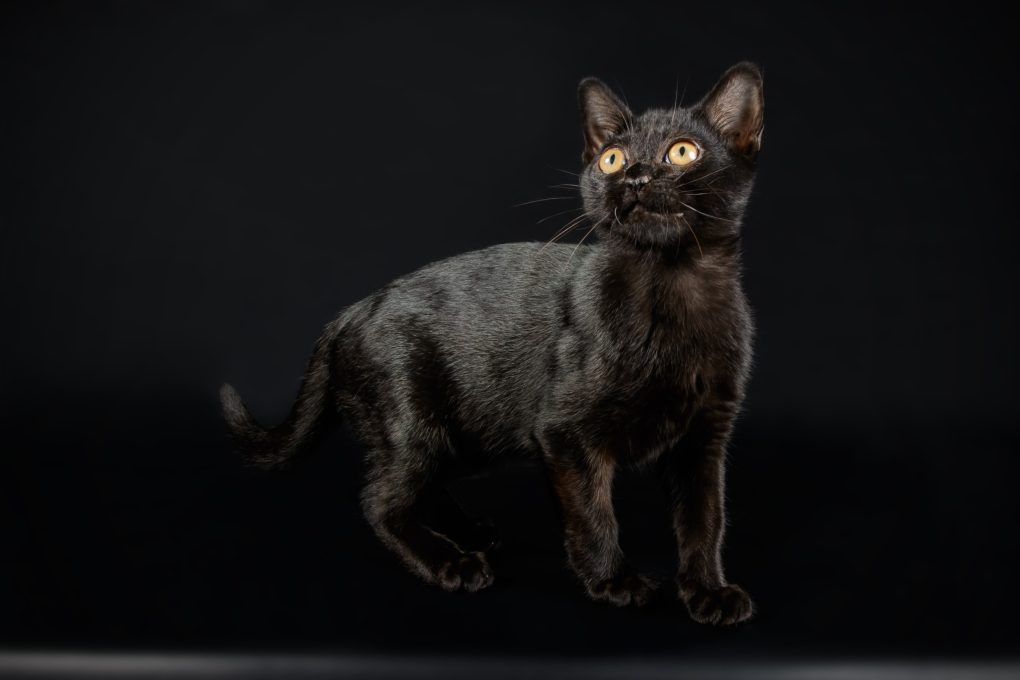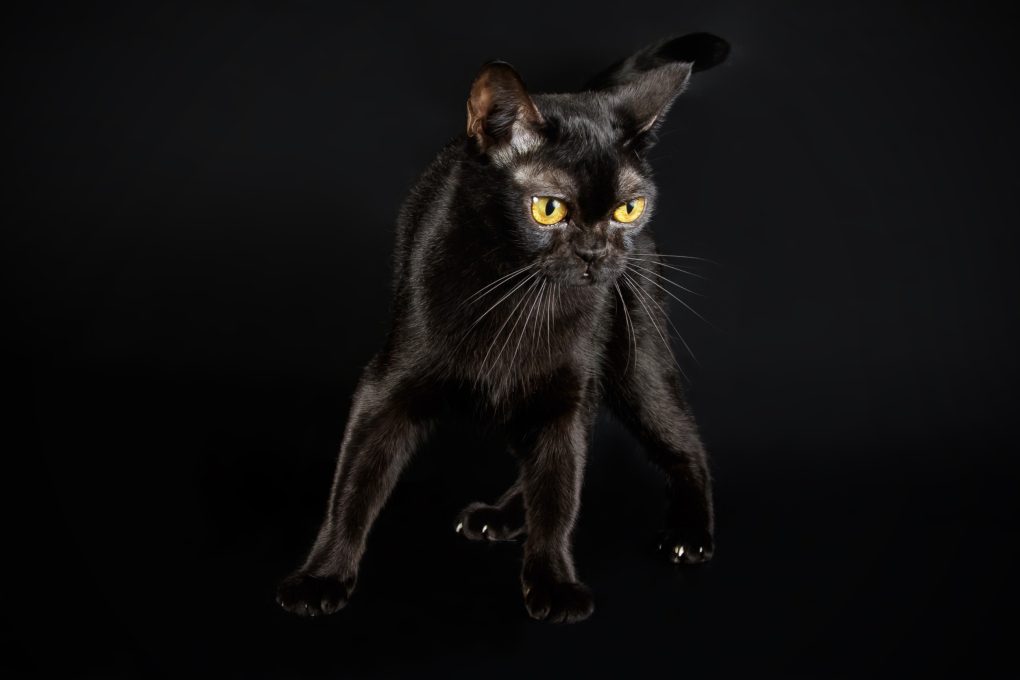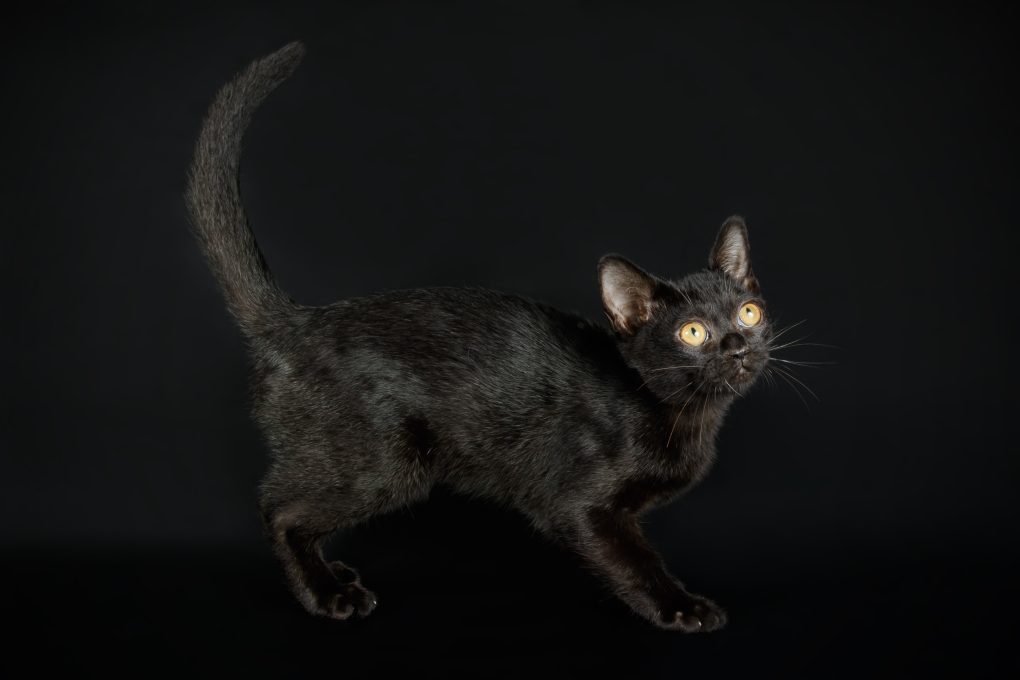Do Bombay Cats Have White Patches: Bombay Cats and Their Physical Appearance
No, the Bombay cat breed is known for having a shiny, black coat and typically has no white patches, but a Bombay cat can have white spots or marks due to genetic variations or mutations. Some Bombay cats may also have tiny white or light-colored hairs scattered throughout their coat, known as “ticking.”
Table of Contents
Bombay Cats and White Spots on Their Body Parts
Chest
Bombay cats can have a white spot on their chest or belly known as a “locket” marking, a small white patch. It’s essential to remember that purebred cats can sometimes have variations in their coat color or patterns, and it’s not uncommon for them to have small white patches or markings. However, this slightly differs from the breed standard, which calls for a solid black coat.


Paws
White spots on Bombay cats’ paws are unfamiliar, as the breed standard calls for a solid black coat. However, due to genetic variations or mutations, a Bombay cat can have white spots or marks on their paws. It’s essential to remember that purebred cats can sometimes have variations in their coat color or patterns, and it’s not uncommon for them to have small white patches or markings.
Head
White spots on the head of a Bombay cat or any other cat can be caused by various factors, including genetics, injury, or a condition known as vitiligo. If you are concerned about white spots on your Bombay cat’s head, it is best to consult a veterinarian for a proper diagnosis and treatment.
Belly
White spots on their belly may occur due to a genetic mutation that causes a lack of pigmentation in certain areas of their skin, or it could result from injury or disease. If you’re concerned about a white spot on your Bombay cat’s belly, it’s best to have it examined by a veterinarian to determine the cause.
Bombay Cats and Other Cats That Have White Spots
Bengal Cats
Bengal cats are known for their distinctive markings, often white spots. The presence of white spots on Bengal cats is a genetic trait, and they are considered part of the breed’s standard. Bengal cats can have white spots on their belly, legs, or other parts of their body.
Some Bengal cats may have more extensive white markings, while others may have only a few white spots. The pattern and distribution of white spots vary widely within the breed and depend on the individual cat’s genetics.
Siamese Cats
White spots on Siamese cats are less common but still occur in some individuals. Siamese cats are known for their distinctive blue eyes, slender bodies, and markings. White spots on Siamese cats can occur on their legs, paws, or chest and may result from a genetic mutation or a change in pigmentation due to injury or disease.


Devon Rex Cats
White spots on Devon Rex cats can occur on their chest, belly, legs, or other body parts. If you have a Devon Rex cat and are concerned about the appearance of white spots on its coat, it’s best to consult a veterinarian to determine the cause and rule out any underlying health conditions.
Common Diseases Associated With White Spots
Fungal Infections
Fungal infections can cause white spots on a cat’s coat. Fungal infections are often the result of exposure to mold, yeast, or other fungi that can infect a cat’s skin and fur. Some common fungal infections in cats include:
- Ringworm: According to VCA Animal Hospital, Ringworm is a fungal infection that causes circular white patches on a cat’s skin and fur. It is highly contagious and can be spread to other cats or people.
- Microsporum canis: This fungus can cause skin infections in cats, leading to hair loss and white patches on the coat.
- Malassezia: This yeast can cause skin infections and itching in cats, leading to white patches on the coat.
Skin Allergies
Skin allergies can cause white spots on a cat’s coat. Skin allergies occur when a cat’s immune system reacts to food, environmental allergens, or flea bites. Some common symptoms of skin allergies in cats include:


- Itching: Cats with skin allergies may scratch, lick, or bite their skin, leading to hair loss and white patches on the coat.
- Rashes: Skin allergies can cause red, inflamed, or bumpy skin, which may lead to white patches on the coat as the hair falls out.
- Dandruff: Skin allergies can cause excessive flaking and dandruff, which can accumulate on the coat and make it appear white.
Vitiligo
Vitiligo is a condition that can cause white spots on a cat’s coat. Vitiligo is a loss of pigmentation in patches of skin and fur, resulting in white spots. It is thought to be an autoimmune disorder in which the immune system attacks the cells that produce pigmentation. The cause of vitiligo is not well understood, and there is currently no cure.
Vitiligo is a rare condition in cats, and its appearance can be distressing to owners. If you suspect your cat has vitiligo, it’s essential to seek veterinary care to rule out any underlying health conditions that may be causing the loss of pigmentation. In addition, your veterinarian can perform a physical examination and any necessary tests to determine the cause of the white spots on your cat’s coat.
There is currently no cure for vitiligo, and treatment is primarily focused on managing symptoms and improving the appearance of the coat. Treatment may include topical creams or medications to improve the appearance of the skin and fur and laser therapy or other light treatments to improve pigmentation.
